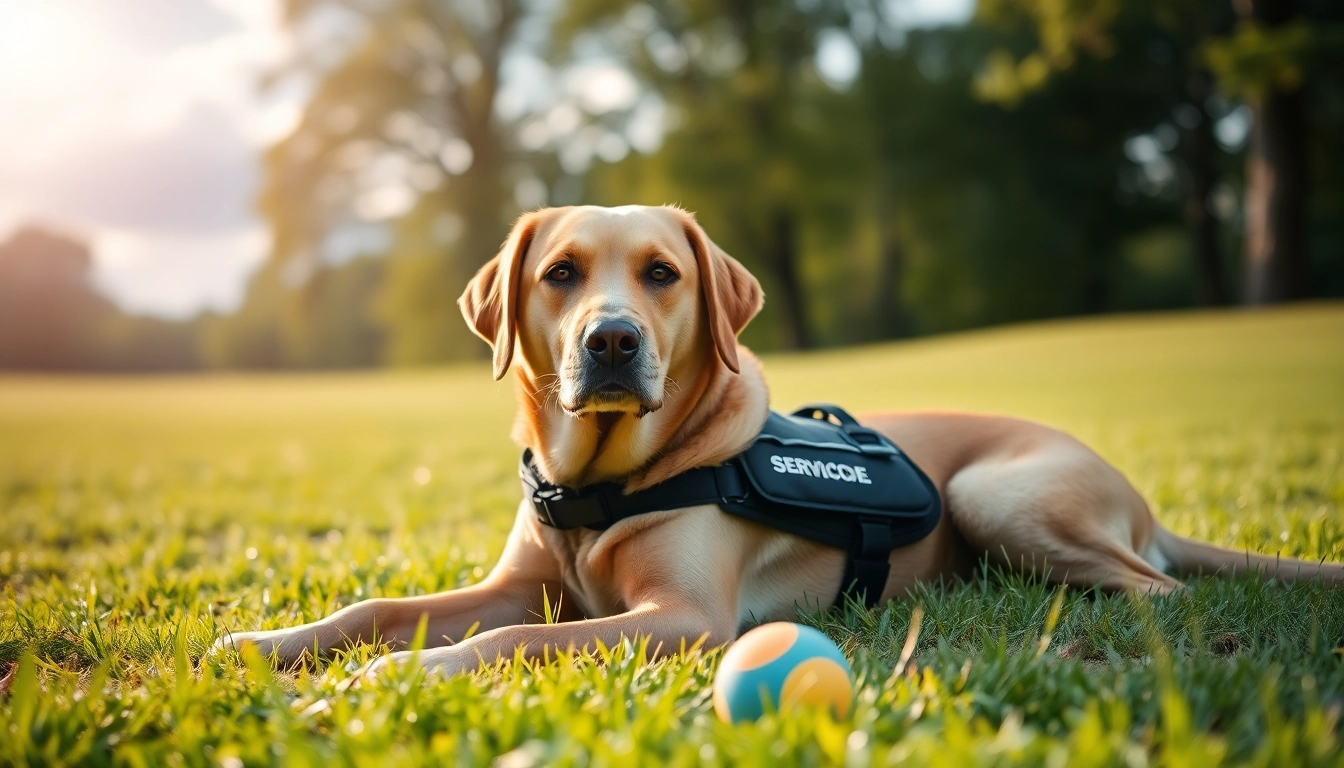
Understanding Service Dogs: What They Are and What They Do
Definition of Service Dogs
Service dogs are specially trained canines that assist individuals with disabilities, ranging from physical impairments to mental health challenges. Unlike emotional support animals, which provide comfort to their owners without formal training, service dogs are capable of performing specific tasks to aid their handlers. This includes guiding individuals with visual impairments, alerting those with hearing difficulties, and providing support to people with psychiatric conditions, among other functions. The training process is rigorous and follows standards established by various service dog organizations to ensure the safety and effectiveness of the dog’s assistance.
Types of Service Dogs and Their Applications
There are several types of service dogs, each trained for unique roles:
- Guide Dogs: Assist individuals with visual impairments in navigating their environment.
- Hearing Dogs: Alert their owners to important sounds, such as alarms or doorbells.
- Mobility Assistance Dogs: Aid individuals with physical disabilities by retrieving items or providing balance support.
- Medical Alert Dogs: Identify and respond to medical emergencies, such as diabetic crises or seizures.
- Psychiatric Service Dogs: Help individuals with mental health conditions by performing tasks such as grounding their owner during anxiety attacks or creating a physical barrier in crowded places.
Benefits of Having a Service Dog
Service dogs offer a myriad of benefits that extend beyond physical assistance. These benefits include:
- Increased Independence: Service dogs empower individuals to navigate their world with greater confidence and less reliance on human assistance.
- Emotional Support: The companionship of a service dog can help alleviate feelings of loneliness and depression.
- Safety and Security: Service dogs can alert handlers to potential dangers and intervene in medical emergencies.
- Improved Quality of Life: Many individuals report enhanced overall mental well-being when accompanied by their service dogs, improving their outlook on life.
Identifying the Right Service Dog for You
Assessing Your Needs and Preferences
Before deciding to buy a service dog, it is essential to evaluate your specific needs. Consider the following questions:
- What type of disability do you have, and what specific tasks do you need assistance with?
- Do you have any preferences regarding the dog’s breed or size?
- Are there any lifestyle factors, such as living space or activity level, that will influence your choice?
Understanding your requirements will help you identify what type of service dog will best fit your needs.
Personality Traits to Look for in a Service Dog
Not all dogs are suited for service work; temperament is vital. The ideal service dog should possess the following traits:
- Calmness: They must remain composed in various environments, including busy public areas.
- Trainability: The dog should demonstrate an eagerness to learn and the ability to follow commands effectively.
- Socialization: A good service dog should be friendly and well-socialized, able to interact appropriately with the public.
- Confidence: They should exhibit self-assurance in unfamiliar situations, providing stability to their handler.
Matching the Right Breed to Your Lifestyle
Different breeds have varying strengths and weaknesses, influencing their suitability for service work. Popular breeds include:
- Labrador Retrievers: Loving, intelligent, and excellent with families.
- Golden Retrievers: Friendly and eager to please, making them great candidates for training.
- Poodles: Highly intelligent and hypoallergenic, suitable for various tasks.
- German Shepherds: Loyal and protective, often used for mobility assistance.
Considering your lifestyle and the dog’s needs will help facilitate a well-suited partnership.
Where to Buy a Service Dog: Finding Reputable Sources
Evaluating Service Dog Organizations
When looking to buy a service dog, it’s critical to evaluate potential organizations carefully. Look for organizations that :
- Provide detailed information about their training programs and methodologies.
- Have positive reviews and testimonials from previous clients.
- Are accredited by recognized associations that set standards for service dog training.
Red Flags to Avoid When Buying a Service Dog
As you investigate options, be on the lookout for red flags that may indicate an unreliable source:
- Vague Information: If an organization cannot provide specific details about their training process, proceed with caution.
- Unreasonably Low Prices: Service dogs require extensive training, and extremely low prices may reflect inadequate training.
- Lack of Transparency: Organizations that are not open about their procedures or history may not be trustworthy.
- Pressure Tactics: Be wary of organizations that rush you into making a decision without allowing time for questions.
Costs Associated with Buying a Service Dog
The cost of acquiring a service dog can be significant, with prices typically ranging from $15,000 to $30,000 or more, depending on the dog’s training level and the organization’s reputation. Costs may include:
- Evaluation and matchmaking fees
- Training for the dog
- Handler training programs
- Ongoing support and resources
It is essential to factor in these costs when considering buy a service dog.
The Purchasing Process: What to Expect
Application Procedures for Buying a Service Dog
The process of acquiring a service dog typically begins with an application. Applicants may be required to provide information regarding their disabilities, lifestyle, and specific needs. After submitting the application, prospective owners might undergo an assessment to determine their suitability for a service dog and identify the right match.
Training and Transition Periods
Once matched with a dog, owners will usually enter a training program to learn how to work effectively with their new companion. This period can last between several weeks to months, depending on the training program. The dog will also undergo continued training, which enables it to adapt to the specific needs of its handler.
Post-Purchase Support and Resources
Reputable organizations typically offer post-purchase support to assist new handlers with any questions or challenges they may encounter. This support could involve access to trainers, behaviorists, and community resources, helping ensure a successful partnership.
Legal Rights and Responsibilities of Service Dog Owners
Understanding the ADA and Service Dog Laws
The Americans with Disabilities Act (ADA) provides guidelines for service dogs, allowing them access to public areas where pets are usually prohibited. A service dog must be trained to perform tasks related to the handler’s disability.
It’s crucial for service dog owners to understand their rights and responsibilities under the ADA and other respective state laws to effectively advocate for themselves and their dogs.
Traveling with Your Service Dog
Traveling with a service dog often requires preparation. This includes having appropriate documentation and understanding the regulations for both air travel and accommodations. In general, service dogs are allowed to accompany their handlers in the cabin of an aircraft and in various public spaces. However, checking with individual airlines and businesses for their policies is advisable to circumvent potential issues.
How to Advocate for Your Rights as a Service Dog Handler
Empowerment comes from knowledge. Owners should be informed about their rights under the ADA, ensuring they can advocate for their service dogs confidently. This includes being aware of who is responsible for the dog’s behavior and the requirement that the dog must always be under the handler’s control. Knowledge of the law will help in effectively addressing any discrimination or miscommunication with establishment staff regarding service dog access.







